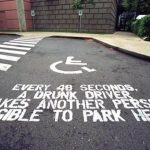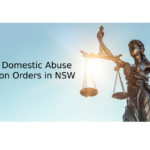Domestic Violence and Homelessness

Down the road from the centre of my hometown there’s a well known park – a wide open,
grass covered space, next to a car park.
During the day, the area is full of people lazing around in the sunshine, shoppers walking to and fro, kids playing, workers having lunch, tourists taking selfies.
But on any given night, the car park is full of vans – people living (or trying to live) out of cars and in campers. The adjacent parkland is littered with blankets and sleeping bags and shopping trolleys and old worn out cardboard boxes where people have marked out their ‘patch’ for the night. By and large, it’s a peaceful community, people with one tragedy in common: they’re homeless.
The police tend to turn a blind eye to ‘overstayers’ so long as they pack up in morning light, and across the road the community centre operates a free meal service a few times a week.
The local paper regularly reports on the issue, more often than not citing Australia’s housing affordability crisis as the crux of the problem. And there’s a lot of truth in that. This is a seaside town and a very popular tourist destination. Real Estate is at a premium and it’s expensive whether you want to buy or rent. And the available jobs are consistent with many other tourist towns – wait staff, baristas, cleaners, child carers, retail assistants … steady work opportunities, but not jobs that pay highly.
Domestic violence causes homelessness
In recent times though, there’s a growing body of research to suggest that one of the most significant contributing factors to homelessness, not just here, but in so many other places around Australia, is domestic violence, and that higher numbers of women than ever before are forced onto the streets.
Domestic violence doesn’t discriminate – it can happen to anyone, of any gender, race, creed, colour, religion or social status, at any time. Often over time, tensions escalate and the situation reaches a point where the relationship breaks, and one of the partners needs to find somewhere else to live.
Research suggests that homelessness caused by domestic violence differs from other forms of destitution because the availability of accommodation is often a critical factor in women’s decisions about whether to leave a violent relationship, especially if they have children to be responsible for.
Statistics published last year by Homelessness Australia (the organisation has since been defunded by the Government and disbanded in January 2016) suggest that domestic violence is the number one reason people seek assistance for homelessness (25%), while another 21% need help due to housing or financial problems.
Crisis accommodation for domestic violence victims is stretched to the limit, and family structures are not as solid or as close in proximity as they were generations ago, often leaving people with no where to turn, except to social services or the streets. And once they are on the streets, they are at a greater risk of being victims of other crimes too.
Remote areas have the highest rate of homelessness service use and the largest growth in use over the past four years.
Why women are at risk
While all homeless people are affected by the shortage of affordable and available housing, the problem is often more prevalent for women, largely because of the gender-based financial inequality in our society, and the fact that women are more likely to take extended periods of leave from the workforce to care for children or relatives and then return to part-time work – 75% of part time workers in Australia are women.
Returning to the workforce can be difficult and the process of finding work can be lengthy, which means women are then reliant on parenting payments and other government benefits, which just don’t cover expenses adequately.
It’s also a fact that more often than not, women tend to be victims of domestic violence. Because of this, they are forced to leave their homes. More than one third of women over the age of 15 have experienced physical, psychological and/or sexual violence at the hands of a current or former partner. Domestic and family violence is the number one reason why people present to specialist homeless services, with 55% of women citing this reason – 25% of total of people seeking help.
Other vulnerable groups
The culture of Aboriginal and Torres Strait Islanders often has an impact on their ability to access homelessness services, plus they can also face discrimination in the housing market or be unable to find housing that is appropriate to their needs due to higher birth rates.
Older single females of all nationalities are a growing risk group too, often because time out of the workforce has meant they have insufficient superannuation or savings in their latter years.
Homelessness is not a choice
On any given night in Australia, an estimated 105,000 people are homeless. Many more are living in insecure arrangements – just one step away from being homeless. This is in a nation that’s supposed to be ‘The Lucky Country’.
New South Wales has the largest population of homeless people in Australia at more than 28,000. But the problem with statistics, particularly when they are used to explain the real picture of homelessness in Australia, is that they are often misrepresentative, for the simple reason that many homeless people are transient, and accurate numbers are difficult to quantify.
It’s not an easy issue to address, with some experts suggesting that at least $30 billion is required to adequately address Australia’s homelessness problem.
Housing affordability, financial difficulties, health and mental health issues are all contributing factors but we just continue to ignore the strong correlation between growing numbers of domestic violence victims and growing numbers of homeless people.







